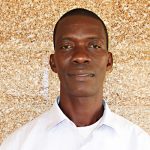The majority of people in Mapitheri Community wake up early each morning for prayers. Then, the children are sent off to the swamp to collect water for their families.
This community has three protected wells that have very clean well environments with zero chance of any contaminants - that is, if these wells could provide reliable clean water. Unfortunately, only one of these three wells is functioning, and only partially.
In addition to this well, we are rehabilitating other non-functioning wells in the area to ensure everyone has access to safe drinking water. See the projects here and here.
That means that this community’s only reliable water source is the swamp, which is located more than a mile away from some homes. Aside from the distance, the road is in poor condition and hilly. It discourages people from using the source.

The community people use this source for more than one purpose. They will use it to bathe, farm, launder, and some of them, particularly the kids, will even defecate close to the source.
Since swamp water is open and not controlled by protocol or rules, it is prone to various contaminants. And because people share this unprotected source with other wild animals, they are exposed to the diseases of those animals.
In the morning, school children will be the first to visit this source. The community people would have to wait until the kids are done, by which time the whole source would be dirty. During weekends the kids will flock to this water point for their weekly laundry, and this will limit the chances of other people accessing water.
The community members must wait for the water to settle before collecting it. We learned that some people in this village do filter their water before consuming it. But Most will let the water stand in containers and wait for it to settle before draining it into their drinking buckets.
Diseases enter this community due to people drinking the dirty water from unprotected sources. When people get sick they cannot be productive and will not earn as much money to care for their families. People die needlessly from these waterborne illnesses like cholera, dysentery, diarrhea, and malaria.
This is a very rural and peaceful community. Those with some basic education have chosen to be traders, traveling to one-day markets called Lumas, buying agricultural produce wholesale and retailing it in other nearby villages. The others with no academic background have chosen to farm.
Most community members have latrines and nearly half of all households have handwashing stations. People in this community are a little careful about sanitation and this is as a result of the presence of sanitary officials who pay frequent visits to this community.
"We have tried to organize Saturday cleaning in this community so that we can make some improvements in our hygiene and sanitation status because at the moment we are very lacking in this department," Mrs. Aminata Turay said.
What we can do:
Training
There will be hygiene and sanitation training sessions offered for three days in a row.
The hygiene and sanitation trainer decided it would be best to teach community members about the importance of handwashing, building and using dish racks, and other sanitation facilities. Pictures will be used to teach the community how to discern between healthy and unhealthy hygiene and sanitation practices.
These trainings will also result in a water user committee that manages and maintains the new well. They will enforce proper behavior and report to us whenever they need our help solving a serious problem, like a pump breakdown.
Well Rehabilitation
We want to work on the well located in the community. Most of these wells were hand dug by local contractors who may not have the energy to dig further down to negotiate a reasonable depth, as a result, these wells get dry not long after their construction. So what we have been doing is converting these wells to boreholes so that a reasonable water level can be reached. This is proving to be the best intervention for these communities.
Our team has decided to do the hard work of drilling a borehole by hand in the bottom of this well, which will not only increase the water quantity but will ensure its quality, too. A new well pad will keep contaminants out, and a new India MkII stainless steel pump will provide easy and safe access to the clean water inside.
This community has been drinking dirty swamp water and suffering the consequences. With our rehabilitating this open well, the surrounding community will be provided with plenty of safe, clean drinking water.

 Protected Dug Well
Protected Dug Well





























